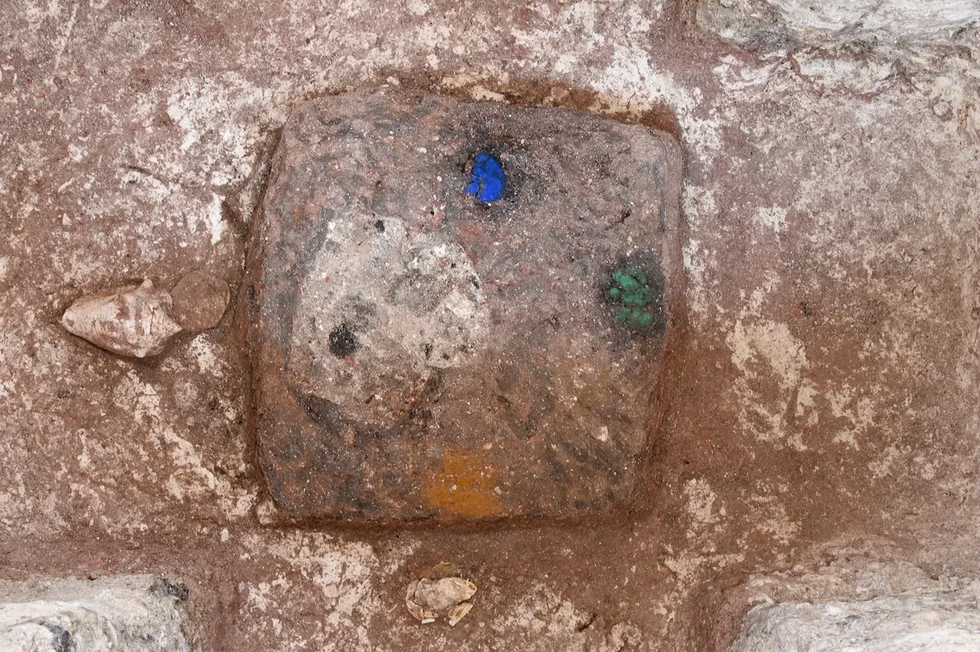Archaeologists unveil mysterious 3,000-year-old Mayan site which may hold ancient 'map of the Universe'
Researchers have come up with a new theory
Don't Miss
Most Read
Latest
Archaeologists have discovered that a 3,000-year-old Mayan site might hold an ancient map of the universe.
Researchers believe the structure, named Aguada Fénix, might be a cosmogram - a geometric map of the universe.
Aguada Fénix was first found using laser technology from the air by researchers from the University of Arizona.
Located in present-day Tabasco State on the Gulf of Mexico, the University of Arizona archaeologists found an enormous cross-shaped pit, called a cruciform, within the region.
TRENDING
Stories
Videos
Your Say
They discovered the cruciform was one of many nestled into each other and connected by canals.
They uncovered a structure more than 1,300 metres long with a total volume of all connected passages being 3.8 million cubic metres.
The researchers say pigment found in the pits correspond to the four cardinal directions.
Blue azurite was used to mark the north, yellow ochre to mark the south, green malachite to mark the east, and pearly seashells the west.

The researchers say pigment found in the pits correspond to the four cardinal directions
|TAKESHI INOMATA / UNIVERSITY OF ARIZONA
Independent Maya specialist Dr James A Doyle told BBC Science Focus: “The cruciform shapes and colour symbolism encoded in the architecture are the physical embodiment of notions of how the earthly plane was organised, governed by the cardinal directions.”
He added: “The dam and the canals underscore the importance of water both practically and symbolically, which is also reflected in the blue/green pigments, shells, and greenstone offerings.”
The new research, published in journal Science Advances, suggests work on the site was conducted by a non-hierarchical community.
The structure does not seem to have evidence of residences, palaces, or central ruling class that are associated with later Mayan structures.
LATEST DEVELOPMENTS

Researchers think a red pigment has faded over time
|TAKESHI INOMATA / UNIVERSITY OF ARIZONA
At least a thousand people, carving the bedrock for several years would have had to build the structure, the researchers believe.
Researchers think the people who constructed the cosmogram were not coerced by a ruling class and were instead operating in an egalitarian society to observe astronomical phenomena together.
They also hypothesise the large space would have been used for trade, socialising, and sacred ceremonies.
In addition to the pigments, jade artefacts were found, mostly of animals, but there was one that seemed to represent a woman giving childbirth.

The jade artefact represents a woman
|TAKESHI INOMATA / UNIVERSITY OF ARIZONA
Dr Doyle said he believes there is more to uncover about society within Aguada Fénix and the jade artefact representing a woman.
“What if she had been a powerful ruler, as we know from many later societies in Mesoamerica, the circum-Caribbean Area and the Central Andes?” he said.
“Surely with more excavation, expanded knowledge about the peoples who built Aguada Fénix, the picture of disparities in the accumulation of goods or influence will become clearer.”
Aguada Fénix was first detected by LiDAR - which stands for Light Detection and Ranging - in 2020, led by University of Arizona academic Takeshi Inomata.
The structure appeared to be naturally made until the area was measured by LiDAR, and is believed to be the oldest monumental construction ever found in the Maya area, according to the research team.










